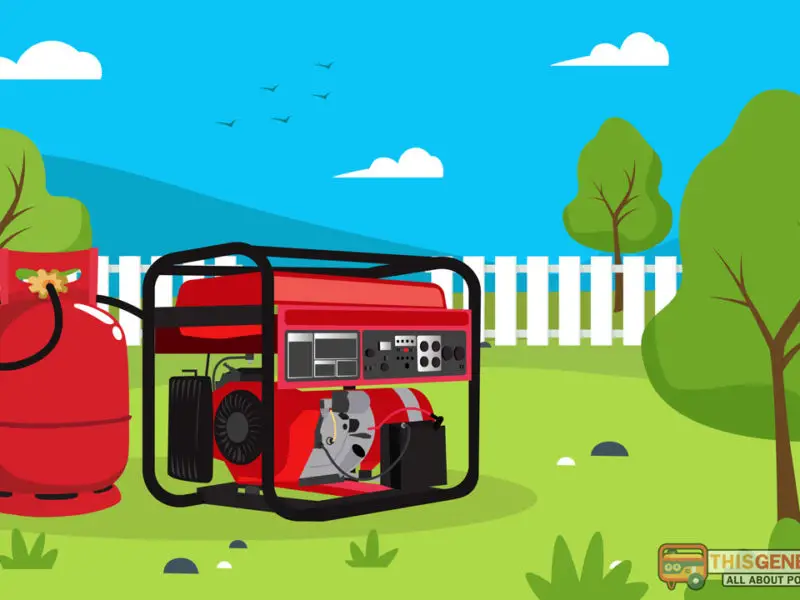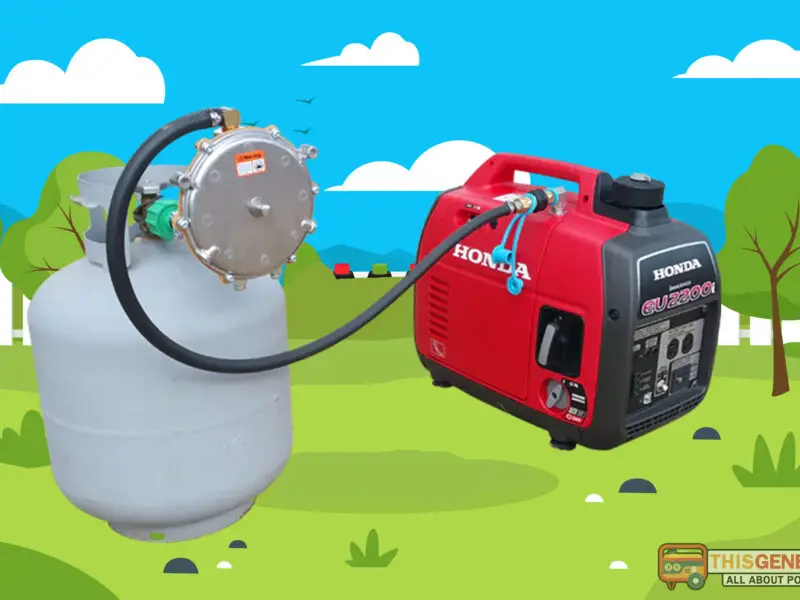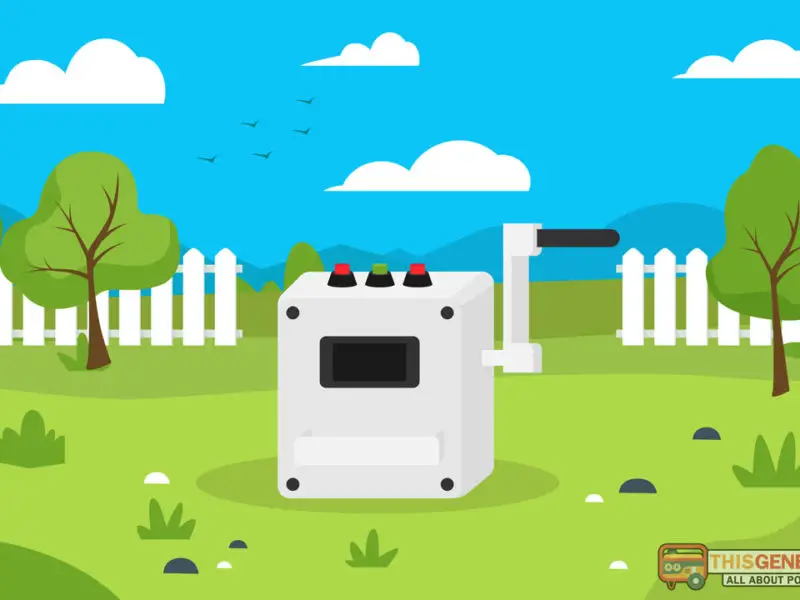A micro-hydropower station is one of the most reliable renewable energy sources you can install on your property. Although the installation cost is a little high, micro-hydro power stations provide tons of power and remain reliable throughout as long as you choose the right location.
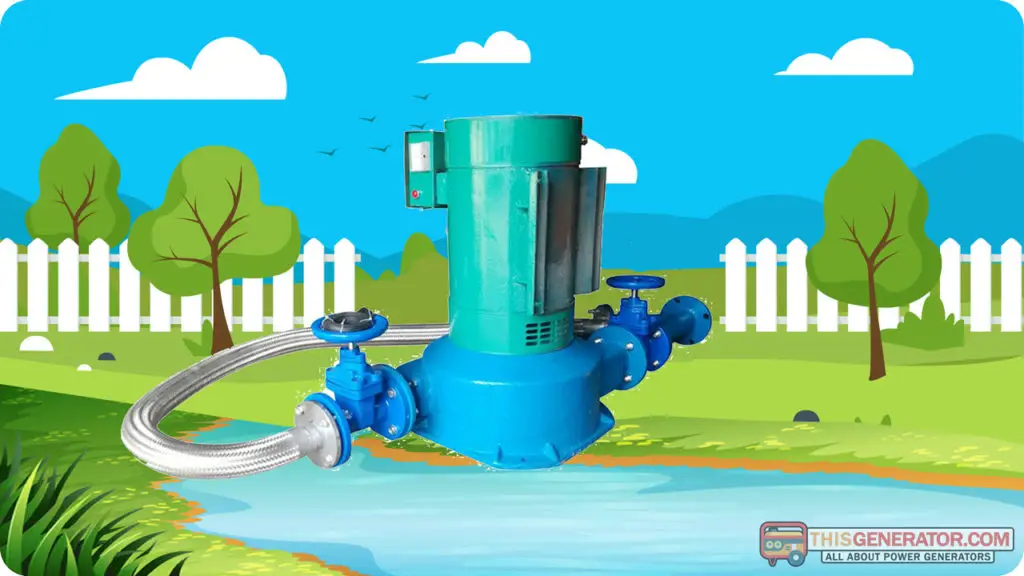
Indeed, you may produce so much power that there’s enough left over to sell to your grid supplier for a small profit.
Feel free to check with the Department of Energy’s website if you’re in doubt. The site says that micro-hydro power stations generate up to 100kWh, with the smallest setups generating at least 10 kWh. 10kWh is more than enough to power a large home, small resort, or hobby farm fully.
As a result, many homeowners with water flowing through their properties are increasingly considering micro-hydro power stations. The rest of this guide discusses important considerations for micro-hydro power station installation and reviews some of the best micro-hydropower solutions to consider.
What’s a Micro-Hydropower Station?
A micro-hydropower (MHP) is a hydroelectric power scheme that produces up to 100kWh of electricity using a stream of water flow. Power from a hydroelectric scheme is typically used to power large homes and businesses or wired the grid to power larger areas.
The original micro-hydro power plant used a water wheel to drive millstones directly. However, modern micro-hydro power systems use turbines instead of water wheels and typically power a generator to produce electric power, thus the name water turbines or water turbine generators.
It’s worth noting that any hydropower system that produces more than 100kW is considered a mini-hydropower system. Also noteworthy is that tiny micro-hydro systems rated from several hundred to 5kW are sometimes referred to as pico hydro systems.
How does a Water Turbine Generator Work?
Water turbine generators comprise five main components that work hand in hand to generate electric power;
- A water conveyance: Conveyance systems can be a water channel or pressurized pipeline (penstock) that delivers water to the turbine system.
- A turbine: The turbine (or waterwheel or pump in some generators) transforms the energy from the conveyance into rotational mechanical energy.
- A generator/alternator: The generator transforms the rotational mechanical energy into electrical energy.
- A regulator: Regulators control the generator’s electrical output to ensure that you’re getting stable, clean power from your turbine.
- Wiring: Carries electricity from the generator to the outlet panel, such as 120V 30A plug outlets.
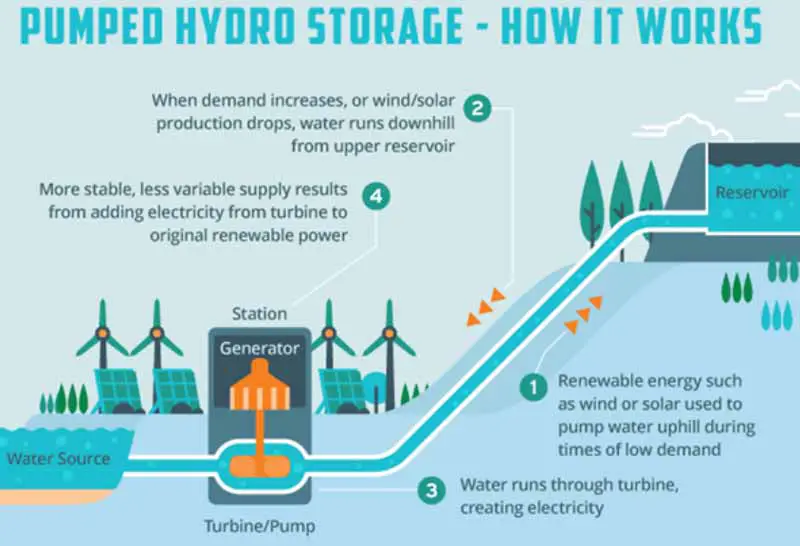
Most manufacturers sell water turbines in packages comprising all the five parts above and any others necessary to create and tap the turbine power. However, DIYers can also mix-and-match components to build a hydropower system of their liking.
It’s also worth noting that most, but not all, micro-hydro power systems come with or require a generator.
What are the different types of water turbines?
A critical consideration as you head shopping is turbine types. You can pick from two broad turbine types, i.e., impulse turbines and reaction turbines.
Impulse turbines
Impulse turbines are the least complex turbines thus the most common high-head micro-hydropower systems. An impulse turbine relies on water velocity to move the turbine wheel, also known as the runner. The two main types of impulse water turbines are Pelton systems and Turgo wheel systems.
- Pelton wheel turbines: Pelton wheel impulse turbines use the jet force concept to create energy. The system forces water into a pressurized pipeline with a narrow nozzle so that water sprays out of the nozzle in a powerful jet. The water jet is directed onto double-cupped buckets attached to the wheel, causing the wheel to rotate.
- Turgo impulse wheels: A Turgo impulse wheel system uses almost the same technology as the Pelton wheel system. However, it’s angled such that the water jet hits three cupped buckets at once. As such, the Turgo engine is smaller, less bulky, and even faster than the Pelton jet system. Turgo turbines are also more reliable during low-flow seasons.
Reaction Turbines
Reaction turbines are more about pressure rather than water velocity. They comprise blades that maintain constant contact with the water. Reaction turbines are typically used in large micro hydropower projects.
However, you can still install a modified reaction turbine in the form of a propeller turbine. Propeller turbines work like a boat’s propeller. They have three to six blades angled strategically on the runner to generate enough pressure to produce power.
Pros and Cons of Micro Hydropower Systems
Small-scale power systems combine the benefits of hydropower with those of standalone power systems while shielding consumers from the disadvantages of large-scale installations.
Benefits
- Incredible energy efficiency: Micro hydropower systems turn small water flows into substation power sources providing up to 100kWh.
- Reliable power source: Although micro hydropower systems have peak seasons when they produce maximum electricity, you never have to worry about the power plant going completely dry. You’ll get substantial electricity even in low seasons.
- No reservoir needed: A micro-hydropower system is a “run of the river” system that doesn’t require a reservoir such as a dam. Moreover, the turbines return all the water to the stream.
- Low environmental impact: small hydropower plants are highly clean energy sources with minimal environmental impact.
- Affordable with high-profit potential: Micro hydropower systems cost $1,000 to $10,000 to install, making them cheaper than wind and most solar power systems. However, they generate more power than similarly-priced solar and wind power systems. You can sell some of the power to your supplier for profit.
Challenges
- Seasonal power output: Micro hydro power station electricity output is seasonal. Research shows that you’ll get slightly reduced power during the summer months.
- Ecological consequences: Additionally, you must remember that hydropower generators divert water from a portion of the stream. This can cause ecological imbalance, which may even cause the stream to dry up in the long term. So, extreme caution is a must.
Top 5 Hydroelectric Generators Review 2022
The top pick is the Yosoo Micro Hydroelectric Power Generator. This unit is an excellent option that offers excellent build and features and is great for homeowners. It has a 10W generation and will be sufficient for your basic requirements.
Top Considerations When Planning a Water Turbine Power Plant
The following are the primary considerations to help you plan and install the right micro-hydropower station for your home or community.
- Is hydropower the right choice for you?
Hydroelectric power is the right choice for you if you have a river or stream running through your property or have a sufficient plumbing system to generate power.
- Type of water source
The body of water you have access to determines the type of hydropower system you can install and how much power you can ultimately produce. Generally, head (vertical distance) water is the best and most powerful. Vertical water is falling water such as natural falls. However, you need at least three feet of falling water. Otherwise, a hydropower plant is impractical.
- Water flow
Water flow means the volume of water passing a selected point on the river per unit time measured in gallons per minute. You can easily measure water flow by damming the water into a container of which you know the volume and measuring the number of gallons that flow into the container after a minute.
- How much power can you produce?
The power you can generate depends on several factors. We recommend using the power-theoretically-available formula to determine your station’s power potential. The formula is as follows;
Pth = Ї x q x g x h
Where;
Pth = Power theoretically available (in watts)
Ї = water density (in kg/m3)
Q = water flow (in m3/s)
G = acceleration of gravity (typically 9.8m/s2)
H = Falling height. Head (in meters)
- Your level of technical knowledge
Unfortunately, standard micro-hydropower systems are complicated to install. So, you need a bit of engineering knowledge to install them. We recommend portable units if you don’t have the requisite knowledge.
- Generator size
You should easily pick the right generator size once you have an idea of how much power you can generate on your site. Most DIY portable units (that don’t need technical expertise to install) generate between 1,500 watts and 3,500 watts.
Product Reviews: Best Water Turbines 2022
Now, let’s look at some of the best water turbines to buy in 2022 based on the above considerations and value for money.
Scott Hydroelectric Turbine Generator
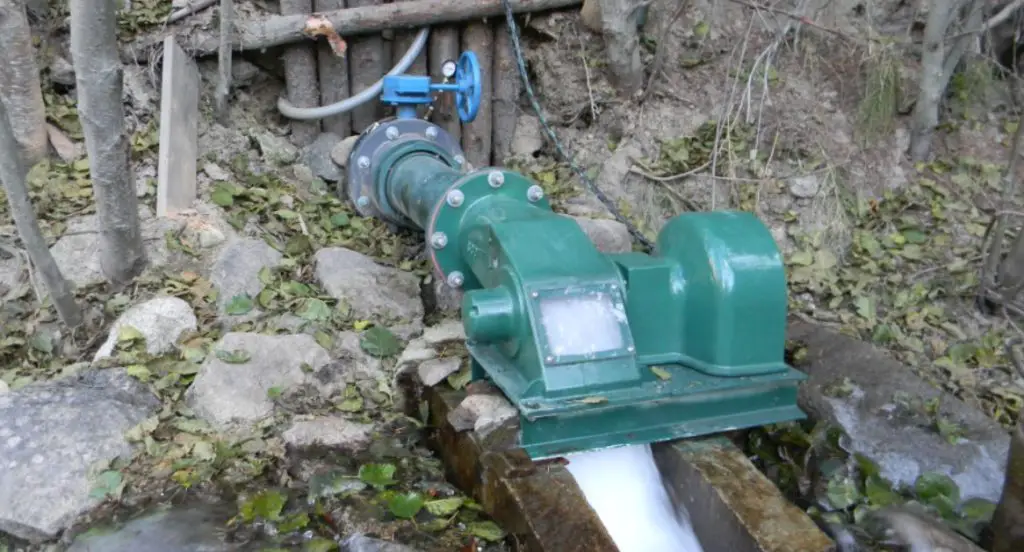
Pros
- Get up to 2,000 watts
- Easy, plug-and-play installation
- Excellent build quality
- Very quiet
Cons
- Quite pricey
- Require a significant head height
The Scott hydroelectric turbine generator is a 1500-watt cross-flow water turbine generator that produces up to 2,000 watts during the high season. This means it’s more than capable of fully powering the average home.
Crossflow systems are essentially pressured water turbines. As such, they’re well-suited for locations with low amounts of water flow. The generators are also impressively quiet and come as complete plug-and-play systems.
However, you need a head height of 25 feet or a pressure rating of 9psi to operate at peak efficiency. That said, though, Scott hydroelectric generators are some of the most reliable hydropower systems. The units are made in the US, and the manufacturer offers excellent customer support.
Jiangsu Naier Hydroelectric Generator (2,000 watts)
Pros
- Powerful at up to 2,500 watts
- Can power an entire home
- Durable and long-lasting
- Very light
Cons
- Requires a substantial waterfall
- Requires serious DIY skills or, ideally, a professional
The 2000-watt Jiangsu Naier hydroelectric generator is a three-phase permanent magnet generator that connects to a water harnessing system to generate electricity. So, you need to separately purchase a waterwheel or a more efficient system to use alongside the generator. This also means that it requires professional installation.
However, it’s a beast once installed. It comes in an aluminum frame that’s both durable and powerful, allowing it to dissipate water reliably. As such, it puts out up to 2,500 watts at peak operation. We also love that it’s 30% lighter than similar-sized water turbines, making it easier to handle.
The only downside is that it requires a substantial water flow. So, it’s ideal for waterfalls with a significant height.
Windzilla PMA Pelton Water Wheel Adapter
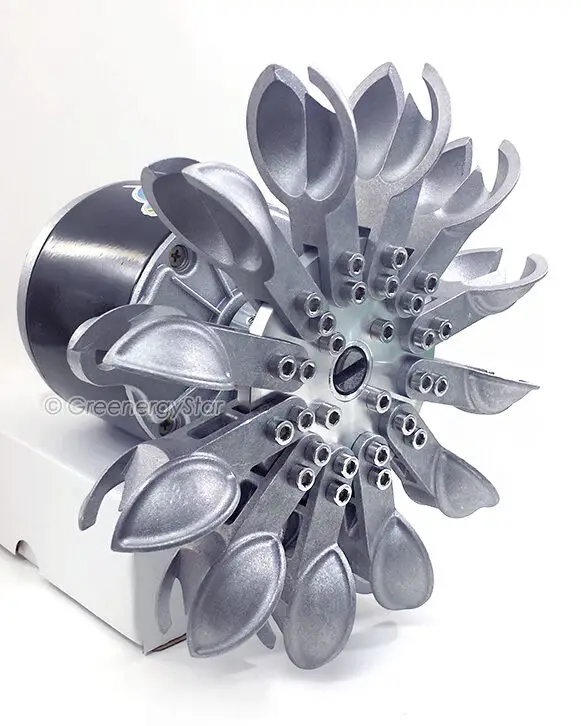
Pros
- Extremely efficient at 90%
- Combines water and wind energy
- Reasonably priced
- It’s essentially a plug-and-play system
Cons
- Requires water pressurization
- Inapplicable in low head streams
If you’re looking for a budget water turbine, perhaps to run a few lights in the barn, you should consider the 350-watt unit from Windzilla. It’s a Pelton wheel system that’s very easy to set up. Remember also that Pelton wheel systems are the most efficient hydropower systems boasting 90% efficiency and higher.
The beauty of the Windzilla is that it works both as a hydropower system and a wind turbine. This means you’re guaranteed power even on low seasons when hydropower is unreliable. It produces 12V at 540 rpm and 240V at 1080 rpm. We also love that it has a mounting foot that you can effortlessly bolt in place and fire up the generator.
The only downside is that the Windzilla requires that you first create pressurized water through gravity or other means. So, you must plan accordingly.
SUNECO 10kH Hydro Turbine Generator
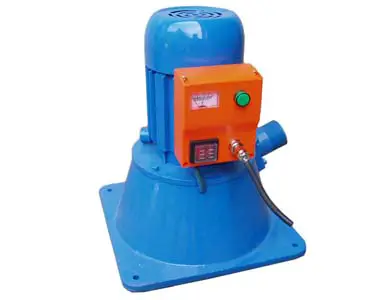
Pros
- Powerful turbine with 10kW output
- Multiple safety features
- Efficient and quiet
- Valuable warranty period
Cons
- It’s costly
- Requires professional installation
Finally, you can also choose to spend whatever it takes to install a large hydropower system to cover your every need and perhaps spare a few kilowatts to sell to your supplier. If so, we strongly recommend the 10kW hydropower system from SUNECO.
This is a single-phase permanent magnet asynchronous generator with a rotary speed of 1500rpm and produces 230V/110V at 43.7A. It’s also very efficient at 70% and uses 200mm to 250mm diameter pipes. However, you need a significant head height, between 30m and 38m, to achieve peak performance. Additionally, you need a rated water flow equivalent to 40-50l/second.
We must mention that the control panel determines the operation of the turbine and hydrogenator. As such, the panel is equipped with several protective features, including short circuit protection, overload protection, and ground fault protection.
FAQs
Which water turbine is most efficient?
The most efficient water turbine is the Pelton wheel. There are many different types of water turbines, each with different efficiency levels. The Pelton wheel is a type of impulse turbine, meaning it uses the momentum of the water to spin the turbine. The Pelton wheel is very efficient because it can extract much energy from the water.
Can I power my house with a water turbine?
Yes, you can power your house with a water turbine. These turbines are used in large-scale power plants and can also power individual homes. Water turbines use the force of moving water to spin a turbine. The turbine is connected to a generator, which produces electricity. The electricity it generates depends on the amount and speed of the water.
What is the most common water turbine in use today?
The most common water turbine today is the Francis turbine. Named after its inventor James B. Francis, this turbine is a reaction turbine used for medium to highhead applications. It is placed in a water pipeline, and the water flow turns the turbine blades, driving a generator to produce electricity.
How much does it cost to install a water turbine?
According to Statista, the average cost to install a water turbine is $2,135 per kilowatt. The cost will vary depending on the size, type, site conditions, required permits, and labor costs. Consult with a renewable energy specialist to get a more accurate cost estimate based on your needs and requirements.
How long do water turbines last?
The average lifespan of a water turbine is 20 to 30 years, although some may last longer. Water turbines are hydropower plants that use the energy of moving water to generate electricity. Their specific lifespan depends on a few factors, including the turbine type, its maintenance, and the waterways’ conditions. With proper maintenance, a water turbine can last for decades.
Summary
Now you know how micro-hydroelectric power systems work and the different types of micro-hydropower systems. You also know how to choose the right micro-hydropower system for your needs. We just want to clarify that hydropower systems, though expensive, typically pay for themselves in about 15 years. So, don’t be put off by the high upfront costs.





